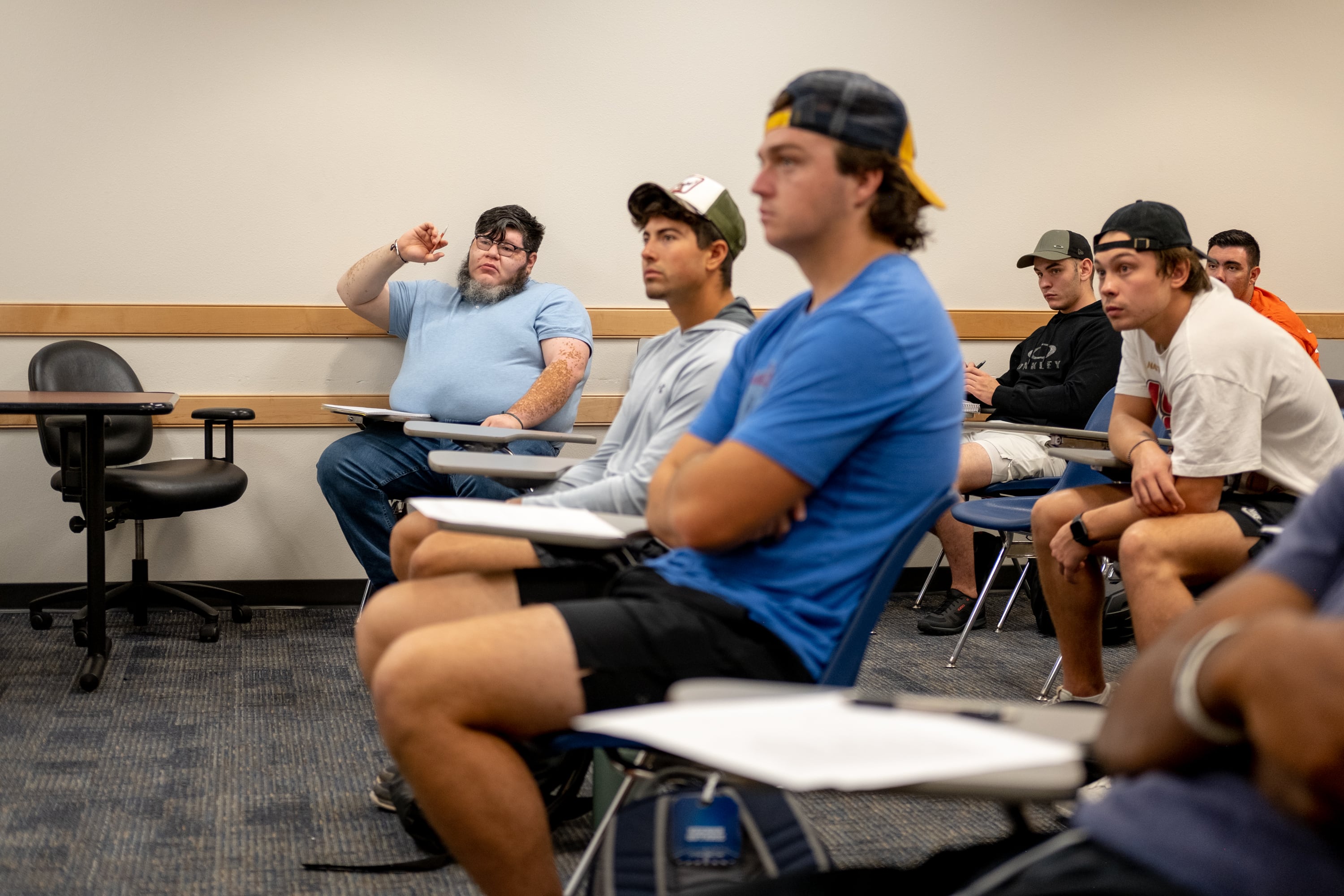Sign up for our free monthly newsletter Beyond High School to get the latest news about college and career paths for Colorado’s high school grads.
Despite the majority of Hispanic students viewing college as a pathway to a well-paying job and support for their families, a new survey finds most of them face significant barriers to graduating.
In fact, two-thirds of the students surveyed said they considered leaving college at some point.
The survey, released last week by UnidosUS, hopes to shed light on the challenges Hispanic students face in college, and to help explain why they graduate at lower rates than their white peers. The study focuses on the population during a time when a growing number of Hispanic students are heading to college each year.
The Latino civil rights and advocacy organization conducted the survey of over 3,000 current and former students from August to September. The poll has a margin of error of 1.8%.
The survey affirms many of the challenges that Hispanic students in Colorado and nationwide have said they face in realizing their college dreams. UnidosUS found the majority lack affordable and healthy food, face challenges in the college-going process such as filling out financial aid, and must juggle work and school.
“It reveals, certainly, that some of the problems that we’ve known about are much deeper than many of us have expected,” said Eric Rodriguez, UnidosUS senior vice president of policy and advocacy.
Other studies and reports have also sought to understand the challenges students face, including a Denver-based study on Hispanic men and their views on the college-going process. Hispanic men are less likely to end up on a college campus than women, a disparity present in other racial groups.
However, the UnidosUS survey provides a broader snapshot of what Hispanic students nationally encounter. Here are a few of the takeaways from the national survey.
Food insecurity high among Hispanic students
National studies from 2020 that included the most recent data on college student food insecurity reported almost a quarter of all college students face food insecurity.
But the UnidosUS survey found much higher rates. About 85% of Hispanic students faced food insecurity at some point. About half of all respondents said they don’t have enough to eat or have healthy food options daily or a few times a week.
In Colorado, more colleges are starting to provide nutrition assistance to students because it helps them get to graduation. This support includes food pantries, mobile food drives, and even cooking classes. That’s true in other states, as well.
Yet many students sometimes weren’t aware of some of the resources potentially available to them, UnidosUS reported.
SNAP, or the federal Supplemental Nutrition Assistance Program, is one way students can get assistance. But less than half of all students nationwide at two- and four-year college campuses have applied for it.
About half didn’t believe they were eligible or weren’t familiar with SNAP.
“That was, frankly, just like a much higher number than we expected to see,” said Anaís López, a senior analyst with BSP Research, the data firm that helped conduct the UnidosUS poll.
Work complicates Hispanic students’ path to graduation
About half of all Hispanic students work part-time in college.
A quarter hold full-time jobs, while another 5% work full- and part-time jobs.
About 40% of respondents held a work study job, which provides more overall support for students to help them make a decent wage and finish their school work. Yet just as many were without that support. Many counted on familial support, creating a greater need to hold a job.
The study also found income and where students go to school does not lower their likelihood of needing to hold a job while attending college. This is important because students who have a job are about 20% less likely to make it to graduation, according to a 2023 study.
Large number of Hispanic students leave college
The survey focused on other major barriers like states tamping down on race-based admissions considerations, and the recent error-plagued rollout of the new Free Application for Federal Student Aid.
Often, students say it’s not one, but multiple issues that factor into their decision to leave school.
The survey shows about a third of students did end up leaving school at some point.
Where students went to college seemed to matter in that decision. Hispanic students at two-year colleges were more likely to leave compared with students at four-year universities. Students who are parents and students from lower-income backgrounds were the most likely to drop out.
“We must invest in supporting these students to ensure that higher education can deliver on its promise,” Rodriguez said.
Jason Gonzales is a reporter covering higher education and the Colorado legislature. Chalkbeat Colorado partners with Open Campus on higher education coverage. Contact Jason at jgonzales@chalkbeat.org.






